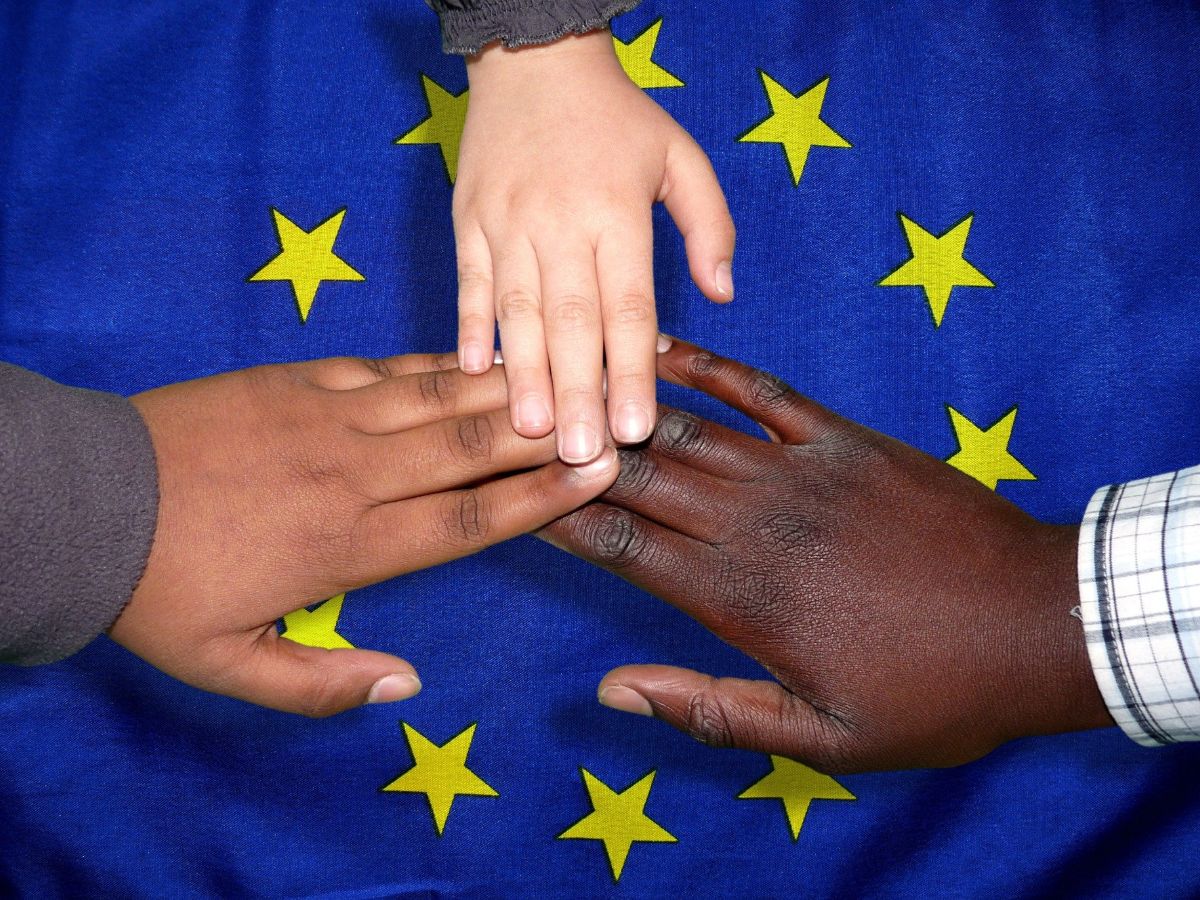
America is a country of immigration; Europe is not. That is the received continental wisdom. More than 33 million American citizens (well above one tenth) were not born there. And America has 37 million immigrants without citizenship who were not born there, either. Nor should we forget the twin-digit millions of individuals who are in America illegally but also contribute to its diversity. Given such figures, it is surprising there are so few problems with the social integration of newly arrived population groups. The figures for 2012, however, show that, in spite of its huge population, the United States only comes 26th in terms of relative net immigration (3.62 immigrants per 1000 inhabitants). Of the EU’s 27 Member States, only Cyprus (10.75), Luxembourg (8.15), Spain (5.02) and Italy (4.67) are ahead of the US whereas most of the other EU Member States have, in relative terms, considerably less net immigration compared to the US. The statistic also lists the countries that have negative immigration (i.e. emigration). That also includes a number of EU Member States, namely Romania (-0.26), Poland (-0.47), Lithuania (-0.73), Latvia (-2.34), Bulgaria (-2.84) and Estonia (-3.33). With close to six emigrants per 100 inhabitants, the autonomous Danish territory of Greenland (→ Autonomies) comes at the top of the European emigration league (only exceeded by a single European country, namely Moldova with a rate of -10.02). All these figures are estimates taken from the CIA’s “World Factbook”. At all events, America’s capacity to absorb immigrants is impressive. On the other hand, the social barriers in America have always been lower than in Europe. That is nicely illustrated by the case of the man who left Austria as a bodybuilder and became one of the most powerful men in the United States. The fact that immigration is part of the American self-image is perhaps one of the reasons why immigration is not automatically seen as a problem or danger.
Comparing demographic developments in America with those in Europe, we see that the US population grew by 23.1 percent between 1990 and 2009 whereas demographic growth for the same period in the 27 countries that now make up the EU was a modest 5.7 percent on average (by way of comparison: at 3.2%, growth for the period in Germany was below average, while Austria’s 9% growth was above average; for Switzerland the figure was 12.9%). Inward migration is gaining in importance for demographic developments in Europe, and there is growing awareness for the fact that our continent has become a region of immigration after all. The days when Europe was clearly a population exporter are over, even though this paradigm shift is still waiting for a convincing European response (→ Yin and Yang).
Demographic developments in the EU in the past and the future

Photo: pixabay/geralt
Demographic developments are determined by two factors: natural developments resulting from the difference between births and deaths on the one hand and migration on the other. In general, the rate of natural demographic growth has slowed in the EU (with a slight improvement to be seen since 2004). According to Eurostat, the EU had a total population of 499.8 million on 1 January 2009. Compared with 497.7 million on 1 January 2008, that is an increase of 2.1 million or 0.4 percent. This increase is comprised of 0.6 million in natural demographic growth (with 5.4 million babies born in 2008) and a migration balance of +1.5 million. With the baby boomers now growing older, however, European death rates cannot be expected to remain constant any longer but to increase. Future growth will therefore depend even more than at present on inward migration, although the picture varies considerably from one EU Member State to another.
The EU statistics for the nine years from 2000 to 2009 show the great variety in demographic developments in the Member States. On average the population of the EU grew by 3.4 percent in those nine years. In four countries the rates of growth were well above ten percent, namely Ireland (17.2%), Cyprus (15.6%), Spain (14.7%) and Luxembourg (13.6%). Austria ranks in an average position with 4.5 percent, while Germany, with a slightly negative growth rate of -0.3 percent is among the one third of the 27 EU Member States whose population has declined. The losses were greatest in Bulgaria (-7.2%), Latvia (-5%), Lithuania (-4.6%) and Romania (-4.4%). On the basis of the available data and identified trends, the European Commission took a look into the future in 2008 (EUROPOP2008 convergence scenario). The calculations suggest that the population of the EU will increase to 521 million by 2035 and will then decline step by step, reaching 506 million in 2060.
The above-mentioned study assumes that, starting in 2015, the number of deaths will exceed the number of births. That will be the end of demographic growth on the basis of natural population growth, leaving a positive migration balance as the sole source of demographic growth in the European Union. As of 2035, however, it is expected that this migration surplus will no longer be enough to fully compensate the shortfall in the natural population figures, i.e. the population will probably shrink. Moreover, the EU continues to move in the direction of an ageing society; the share of older persons aged 65 and above is expected to increase from 17.1 percent in 2008 to 30 percent in 2060, i.e. one third of the population will be pensioners (by current standards). However, as the past, the future will bring great variety in terms of demographic change within the EU, with population growth predicted for thirteen Member States and population decline for fourteen from 2008 to 2060. The strongest growth is expected in Cyprus (+66%), Ireland (+53%), Luxembourg (+52%), the United Kingdom (+25%) and Sweden (+18%), with the biggest decreases in Bulgaria (-28%), Latvia (-26%), Lithuania (-24%), Romania (-21%) and Poland (-18%). According to this scenario, the United Kingdom, with 77 million inhabitants, will be the biggest of the current Member States in 2060, with Germany (71 million) relegated to third place after France.
Forms of immigration and their developments

Photo: pixabay/Capri23auto
Immigration comprises three distinct phenomena: the inward migration of third-country nationals, the settlement of EU citizens from other EU states, and the return of the country’s own citizens. The statistics for 2006 show the relative importance of these three aspects. In 2006 a total of 3.5 million people migrated to one of the 27 Member States of the EU. Of this total, 86 percent were non-nationals of the country concerned (i.e. only 14% were returnees). 1.8 million of all immigrants (more than half) were third-country nationals (i.e. persons without EU citizenship). The remaining 1.7 million immigrants were EU citizens with the right to move freely within the EU and choosing to settle in a Member State (half of which were returnees). This shows that the internal mobility of EU citizens has become a significant factor.
According to the EU Commission, a total of slightly more than eight million EU citizens – about 1.6 percent of the EU population – had made use of their right to settle in another Member State in 2008. It is also estimated that, as a result of inward migration from non-European countries, about 18.5 million third-country nationals are now living in the EU. The share of non-EU nationals in the EU is thus 3.8 percent of the total EU population. To this figure we must also add those third-country nationals who are illegal immigrants. This group is naturally hard to quantify; most estimates have varied between 4.5 and 8 million. In October 2009, however, an EU research project (Clandestino) attracted attention with new figures, which were much lower than the previous estimates. According to these statistics for 2008, there are between 1.9 and 3.8 million illegal immigrants in the EU (0.39–0.77 % of the population of the EU and 7–13% of the total for non-EU nationals). In some countries, like Spain, there have been occasional legalisation programmes for “irregular” immigrants. That makes sense when such persons can neither be granted asylum nor returned to their countries of origin for practical reasons (i.e. unclear identity or lack of cooperation on the part of the country of origin). Legalisation programmes are reflected in the immigration balance, even though no physical inward migration has occurred (as the persons concerned were already in the country).
Most EU countries now have a positive migration balance. Of course, there was significant outward migration from the new EU Member States after the beginning of the 1990s but the situation has changed and most of those countries, too, now attract immigrants. In absolute terms (i.e. not relative to the size of the population), the biggest inward migration countries in the EU are currently Spain, Germany, Italy and Great Britain. In 2006 Spain, Germany and Great Britain alone accounted for more than two million of the EU total of 3.5 million immigrants, with Spain at the top of the inward migration league with approximately 841,000 arrivals. In general, inward migration to Spain has risen significantly since the end of the 1990s and has increased more than tenfold on an annual basis over the last ten years. With 662,000 arrivals in 2006, Germany was the second most frequent choice for inward migration in the EU, although the figures for the previous years were much higher. That is the reverse of the case in Italy, where the figures have increased in the last few years. With about 470,000 arrivals, inward migration to Italy reached a new height in 2003. The figures declined in the following years but rose steeply again to 558,000 in 2007. Since the mid-1990s, there has also been a pronounced increase in the figures for migration to the United Kingdom. Since 2002 the country has attracted over 500,000 immigrants a year, a large proportion of them coming from the new EU Member States and especially from Poland. Since the beginning of 2000 there has also been an increase in inward migration to the Czech Republic as another new EU Member State and also to Austria. For 2004, Austria reported 127,399 arrivals, although the numbers have since declined. In 2006, the figure for migration to Austria was 100,972 compared with 73,495 for outward migration.
The challenges behind immigration movements

Photo: pixabay/sasint
When people move across borders, the ideas and culture that every individual and every group has move with them. The host society and the immigrants must then enter into a process of communication, whether they want to or not. So far mobility within the EU has rarely been addressed with reference to the subject of minority protection. And yet immigrants with EU citizenship can certainly become a group in the public eye (→ Case Studies), as in the recent case of Polish immigrants to Great Britain. With well above 200,000 citizens abroad, the Poles constitute the biggest group of mobile EU citizens, and they are particularly numerous in Great Britain, where Polish-language newspapers have appeared on the market. The economic crisis has led to occasional cases of conflict (→ Business and Economic Crises), and there have been reports of written and, in a few instances, physical aggression. The same applies to members of the Roma, who have taken advantage of the EU’s internal mobility rule to migrate from the new Member States in the East to Great Britain, Spain, France or Italy in order to escape poverty (and sometimes racism) in their countries of origin (→ Roma). A recent report published by the EU Agency for Fundamental Rights (→ Organisations) points out that internal mobility is not yet receiving the attention it deserves from the Member States with regard to social coexistence and integration. This is an area where work still needs to be done to support the process of integration for mobile EU citizens and breathe life into EU citizenship.
An even bigger challenge is of course inward migration from non-EU countries, where the culture gap is considerable (and the legal implications also differ since they are not EU citizens). The ongoing debate in Germany on the subject of parallel societies, the willingness to integrate, radicalisation, the vision of “Euro-Islam” and the question of the right response shows how complex and difficult the subject is. Little use can be made of standard solutions in view of the differences between the various cases and situations. All that can be said is that the two poles of integration strategy, namely the French assimilation model and the British coexistence approach have both produced extremely poor results. Neither strict assimilation nor rigid segregation can be the response to immigration. Every society needs a cross-societal dialogue, with bilateral acculturation as the order of the day. The host society must closely examine its old rule books for “cultural shadows”, which impose a disproportionate burden on immigrants and their culture (→ Veil). At the same time the immigrants must internalise the basic values of the host society. This approach is also to be found in the “eleven common basic principles” for the integration of third-country nationals adopted by Council of the European Union in November 2004 (→ Organisations).
What the integration debate requires is the courage to recognise cultural change in an increasingly pluralistic society. What we also need is trust in our own legal systems; they are most certainly capable of defining the limits of mutual acculturation where they are rooted in the European consensus on fundamental rights. The suggestion that the willingness of Germany’s Federal Constitutional Court to recognise religious principles of slaughtering animals (halal) is a first step on the path to permitting criminals to be sentenced by Muslim courts to have their hands chopped off on German soil shows how great is the need for information and education. Legal systems are living organisms; they adapt to new situations without discarding their basic principles.
Integration is a two-sided task. For integration to be successful, it must be attractive to both the majority society and the immigrant community. It must be worthwhile for the host society in that the immigrants come to recognise the basic principles on which that society is based, and it must be positive for the immigrants insofar as it opens the door to them to upward social mobility in the host country. A recent report of the German Centre for Turkish Studies entitled “Successes and Deficits in the Integration of Ethnic Turkish Immigrants: Developments in their Living Situation from 1999 to 2008”, for example, says that second- generation Turkish immigrants are better integrated than the first generation but that this has not been accompanied by an improvement in social standing. What Europe can perhaps learn from America is the need to prove that an open attitude towards the host society pays off.
Two take aways:
- . In comparison to America, the population of Europe is growing only slowly. Immigration is at a low level, too. The population is decreasing in one third of the EU Member States. Immigration, however, is increasing, and Europe has become an immigration continent. By 2015 deaths will outnumber births, bringing natural demographic growth to an end for the EU. Inward migration will then be the sole growth factor, but it is estimated that by 2035 it will not be enough to fully compensate negative demographic growth. There are currently half a billion people in the EU, most of them nationals of the EU country they live in. About eight million people, or 1.6 percent of the EU population, are EU citizens who have settled in an EU Member State that is not their home country. 18.5 million people, or 3.8 percent of the EU population, are third-country nationals; they are nationals of a non-EU country living legally in the EU. To them must be added between two and four million third-country nationals living in the EU illegally.
- Today’s immigration challenge is management of the processes of communication and integration for immigrants and host society alike. Neither of the two poles of integration strategy – assimilation in France and coexistence in the UK – is a blueprint for success; the solution to immigration can be neither assimilation nor segregation. What is needed is a two-sided process, which is based on mutual adaptation as the guiding principle, which does not call into question the fundamental values of society, but which shows that opening up to society pays off in social terms.
